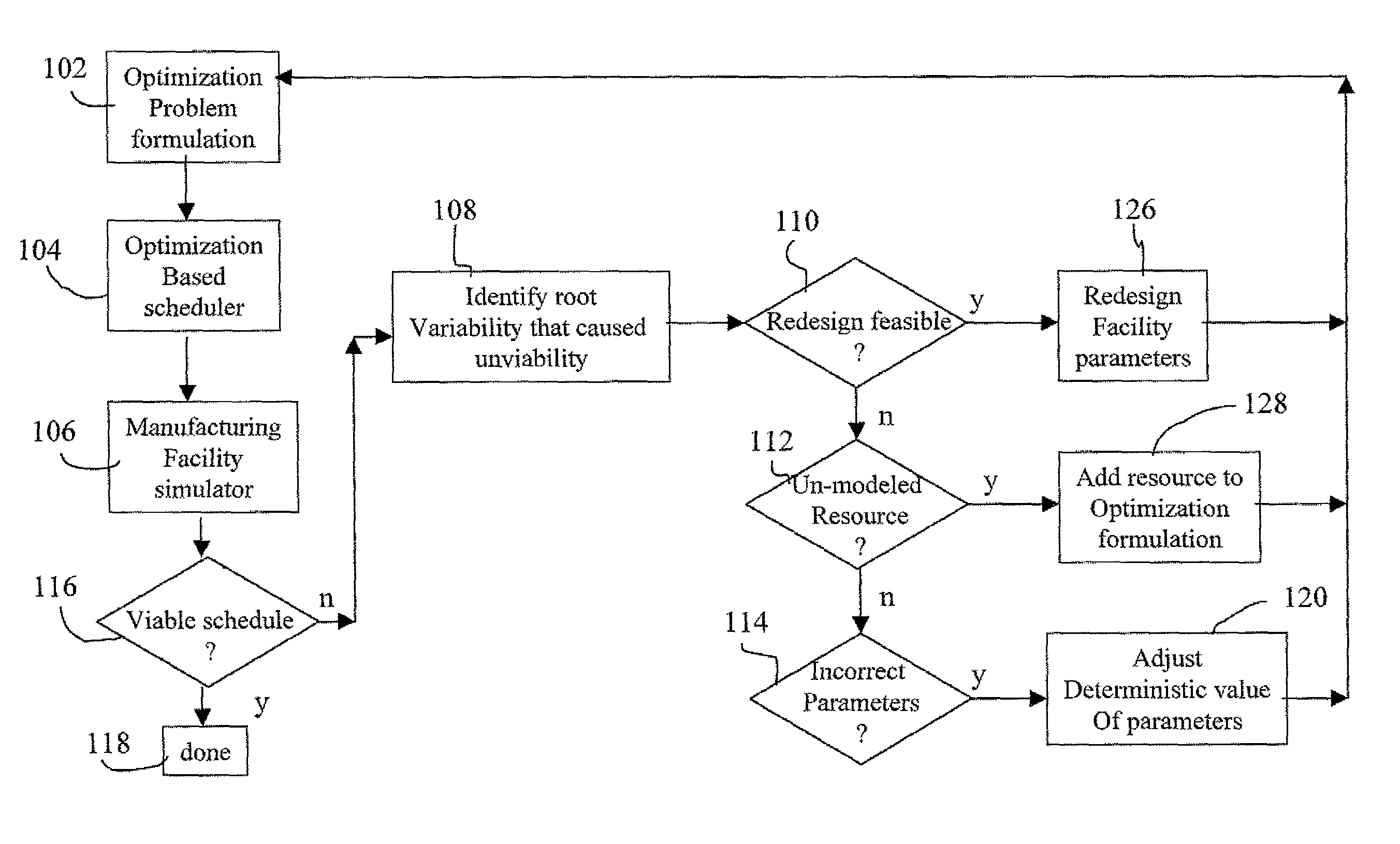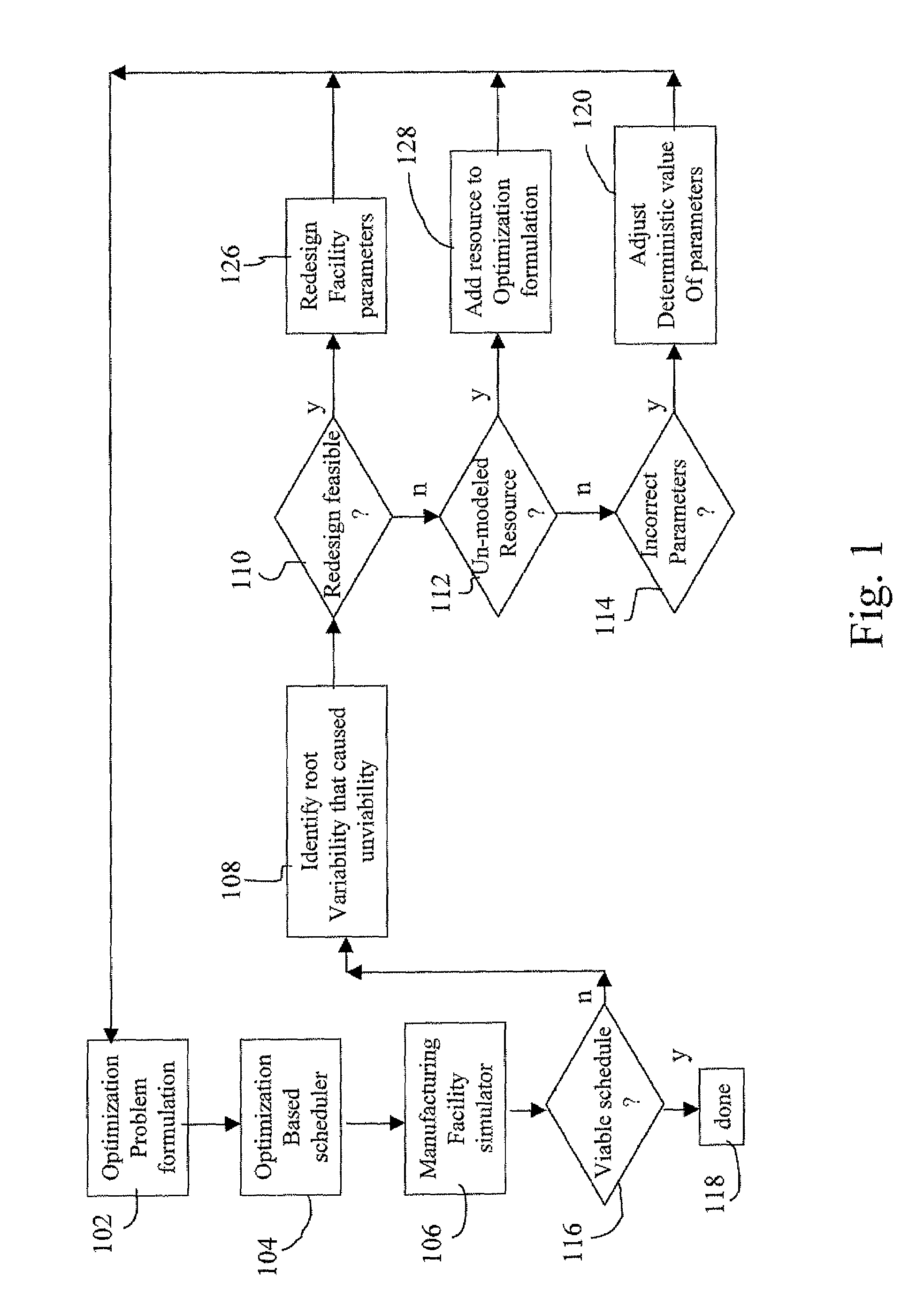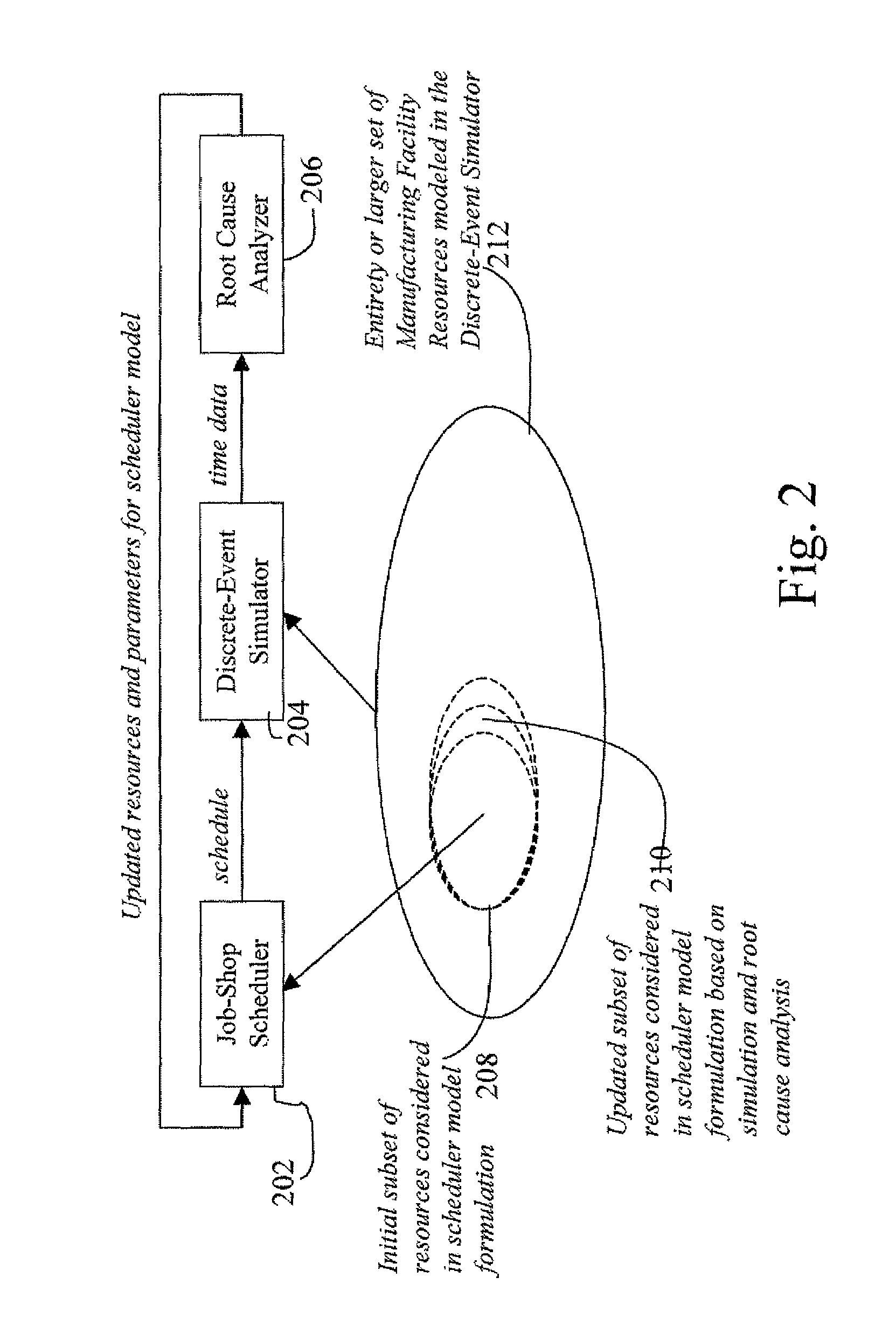Integration of job shop scheduling with discreet event simulation for manufacturing facilities
a manufacturing facility and event simulation technology, applied in the field of simulation methods, can solve the problems of limiting the capacity of the material handling system to be equal or slightly above the capacity of the rest of the system, increasing the size of scheduling problems to intractable levels, and the “time taken to move between machines a and b” etc., and achieves robust schedules and enhanced job shop scheduling formulations.
- Summary
- Abstract
- Description
- Claims
- Application Information
AI Technical Summary
Problems solved by technology
Method used
Image
Examples
Embodiment Construction
[0014]The method and system of the present disclosure in one embodiment integrates scheduling with a simulation model and simulation to produce viable schedules by including changes and other feedback suggested by the simulator within the scheduling algorithm. This allows a clear illustration of the impact of un-modeled random variables, resources and dispatching policies on the robustness of the schedule. The method and system of the present disclosure in one embodiment also allows a plant designer to identify plant design measures that could reduce variability and improve the plant's robustness in handling different schedules. The method and system may be utilized to design new production facility layouts as well as improving existing ones. Equipment makers also may use the method and system of the present disclosure to provide help on floor layout design to their prospective clients.
[0015]FIG. 1 is a flow diagram illustrating a method of integrating job shop scheduling with discr...
PUM
 Login to View More
Login to View More Abstract
Description
Claims
Application Information
 Login to View More
Login to View More - R&D
- Intellectual Property
- Life Sciences
- Materials
- Tech Scout
- Unparalleled Data Quality
- Higher Quality Content
- 60% Fewer Hallucinations
Browse by: Latest US Patents, China's latest patents, Technical Efficacy Thesaurus, Application Domain, Technology Topic, Popular Technical Reports.
© 2025 PatSnap. All rights reserved.Legal|Privacy policy|Modern Slavery Act Transparency Statement|Sitemap|About US| Contact US: help@patsnap.com



